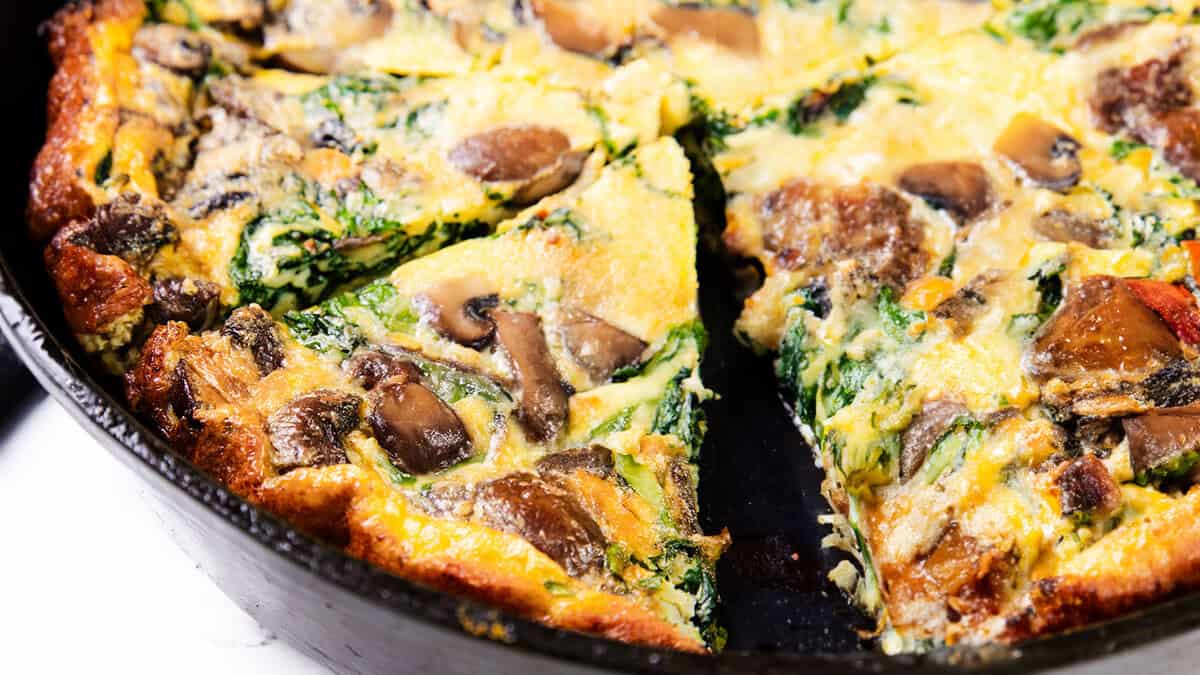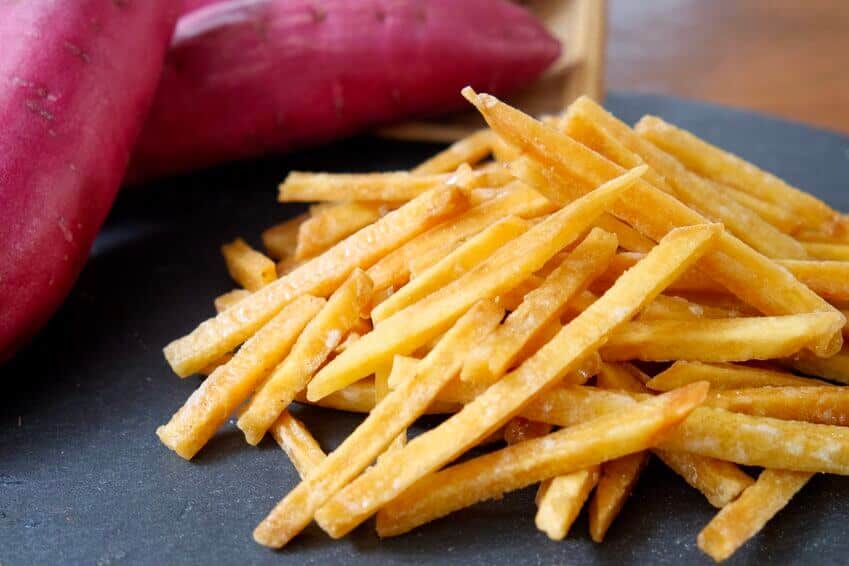If you’ve never made Korean knife-cut noodles from scratch before, don’t worry — it’s much easier than it looks, and honestly, kind of fun! These noodles are chewy, rustic, and so satisfying to eat!
In this post, I’m sharing just the noodle recipe — no broth, no sauce, just the dough and how to roll and cut it. You can use these noodles in kalguksu, jajangmyeon, bibimmyeon, or anywhere you want a fresh, handmade noodle. Once you’ve made them once, you might start keeping a batch in the freezer like I do.

What Are Korean Knife-Cut Noodles?
Kalguksu (칼국수) means “knife noodles” in Korean. They’re rolled out, folded, and sliced by hand (using a knife) — no machines here! The result is chewy noodles with a slightly rustic look and feel. Unlike store-bought noodles, these have a bit of character — and that’s what makes them so charming.
Although they’re usually served in a warm broth, the noodles themselves make a perfect blank canvas. Make a batch, and you can use them in all kinds of dishes.
Why You’ll Love This Noodle Recipe
- Just a few pantry ingredients
- Soft, chewy texture
- No pasta machine needed
- Freezer-friendly
- Perfect base for soups, stir-fries, or cold noodle dishes
What You’ll Need (Makes 4 Servings)
- 2 cups plain (all-purpose) flour
- 1/4 tsp fine salt
- 1/2 tsp cooking oil
- 1/2 cup water, plus 1/2 to 1½ Tbsp more as needed — adjust by feel, depending on humidity and flour brand.
* Measurements: 1 Tbsp = 15 ml, 1 cup = 250 ml

How to Make Korean Knife-Cut Noodles
1. Make the Dough
In a medium-sized bowl, combine the flour, salt, cooking oil, and 1/2 cup of water. Mix until the dough begins to come together. If the dough feels too dry, gradually add more water—up to 1½ tablespoons—until it forms a slightly chewy, elastic dough.
Dough texture can vary depending on humidity and flour type, so trust the feel: it should be firm but pliable. If it gets too sticky, sprinkle in a bit more flour. Mix and knead until the dough is smooth and cohesive.

2. Rest the Dough
Cover the bowl with plastic wrap and let the dough rest at room temperature for 1 hour. This resting period helps the gluten relax, making the dough easier to roll and work with.

3. Divide and Roll
Once rested, knead the dough briefly by hand to bring it together, then divide it into six equal portions. Generously dust a chopping board with plain flour to prevent sticking. Take one portion and place it on the floured surface. Using a rolling pin, roll it out evenly and thinly. Make sure the dough stays smooth and doesn’t stick to the board—add a bit more flour as needed.

4. Fold and Slice
Lightly sprinkle flour over the surface of the rolled-out dough to prevent sticking. Starting at one end, gently fold the dough into loose, even layers — not too tight. Leave a little gap between the folds so it’ll be easier to separate the noodles later. Aim for a strip about 5 cm wide (roughly 2 inches). Handle the dough gently to keep its elasticity and avoid tearing. Once folded, dust the top lightly with flour, then use a sharp knife to slice the dough into thin, even strips.

5. Ready to Use
Once sliced, gently separate the noodles and give them a light dusting of flour to keep them from sticking. They’re now ready to cook or store for later. These fresh, homemade noodles are perfect for dishes like kalguksu (knife-cut noodle soup), bibimmyeon (spicy mixed noodles), or jajangmyeon (black bean sauce noodles) — a simple way to add a delicious, personal touch to your meal.

Tips for Perfect Noodles
- Let the dough rest. — giving the dough time to rest makes it much easier to roll out, and it also improves the texture of the noodles. The gluten relaxes, which means less resistance when rolling and a better chew once cooked.
- Roll the dough as thin as possible — this is key! Thick dough can make the noodles a bit too chewy after cooking (though that texture actually works well for sujebi, hand pulled noodle soup). Keep in mind that the noodles will puff up and almost double in thickness once boiled.
- Generously dust your board and the rolled-out dough with flour to prevent sticking. It makes cutting and separating the noodles much easier, and helps them hold their shape later.
- When folding the dough before slicing, do it loosely — you want layers, not compression. That way, the noodles won’t stick together or lose their bounce.
- Use a sharp knife and aim for clean, even cuts. Consistent thickness means they’ll cook evenly and feel nice to eat.
- When you’re slicing the dough, work quickly but carefully. Once it starts to dry out, it can be harder to handle and won’t slice as smoothly.

How to Store Homemade Noodles
- Fridge: Dust the uncooked noodles generously with flour or cornstarch to prevent sticking, then store them in an airtight container in the fridge. Try not to stack them too tightly — this helps them keep their shape and texture, and they’re best used within 1–2 days.
- Freezer: Generously dust the noodles with flour, then lay them out in a single layer on a tray or plate. I like to line mine with baking paper — it makes cleanup easier and helps prevent sticking. Once they’re frozen solid, transfer them to a freezer-safe bag or container. When you’re ready to cook, there’s no need to thaw — just drop them straight into boiling water. Depending on how thick your noodles are, they might need 30 seconds to 1 minute longer than fresh ones. They’ll keep well in the freezer for up to 1 month.

Love Korean food? Explore our site for more authentic Korean recipes including how to create a perfect Korean BBQ at home or other easy Korean recipes. Also, never miss a new recipe by subscribing to our newsletter, and join us in celebrating Korean cuisine!

- ▢ 2 cups plain flour (all-purpose flour)
- ▢ 1/4 tsp fine salt
- ▢ 1/2 tsp cooking oil
- ▢ 1/2 cup water plus 1/2 to 1½ Tbsp more as needed — adjust by feel, depending on humidity and flour brand.
Make the Dough. In a medium-sized bowl, combine the flour, salt, cooking oil, and 1/2 cup of water. Mix until the dough begins to come together.If the dough feels too dry, gradually add more water—up to 1½ tablespoons—until it forms a slightly chewy, elastic dough. Dough texture can vary depending on humidity and flour type, so trust the feel: it should be firm but pliable. If it gets too sticky, sprinkle in a bit more flour. Mix and knead until the dough is smooth and cohesive.
Rest the Dough. Cover the bowl with plastic wrap and let the dough rest at room temperature for 1 hour. This resting period helps the gluten relax, making the dough easier to roll and work with.
Divide and Roll. Once rested, knead the dough briefly by hand to bring it together, then divide it into six equal portions. Generously dust a chopping board with plain flour to prevent sticking. Take one portion and place it on the floured surface. Using a rolling pin, roll it out evenly and thinly. Make sure the dough stays smooth and doesn’t stick to the board—add a bit more flour as needed.
Fold and Slice. Lightly sprinkle flour over the surface of the rolled-out dough to prevent sticking. Starting at one end, gently fold the dough into loose, even layers — not too tight. Leave a little gap between the folds so it’ll be easier to separate the noodles later. Aim for a strip about 5 cm wide (roughly 2 inches). Handle the dough gently to keep its elasticity and avoid tearing. Once folded, dust the top lightly with flour, then use a sharp knife to slice the dough into thin, even strips.
Ready to Use. Once sliced, gently separate the noodles and give them a light dusting of flour to keep them from sticking. They’re now ready to cook or store for later. These fresh, homemade noodles are perfect for dishes like kalguksu (knife-cut noodle soup), bibimmyeon (spicy mixed noodles), or jajangmyeon (black bean sauce noodles) — a simple way to add a delicious, personal touch to your meal.
Storage Tips
Fridge:
Dust the noodles well with flour or cornstarch and store them in an airtight container. Try not to stack them too tightly. Best used within 1–2 days.
Freezer:
Lay them out in a single layer on baking paper and freeze. Once solid, transfer to a freezer-safe bag. Cook straight from frozen — no need to thaw — and add 30 seconds to 1 minute if needed. They’ll keep well for up to 1 month.
Calories: 232kcal | Carbohydrates: 48g | Protein: 6g | Fat: 1g | Saturated Fat: 0.1g | Polyunsaturated Fat: 0.4g | Monounsaturated Fat: 0.4g | Trans Fat: 0.003g | Sodium: 148mg | Potassium: 67mg | Fiber: 2g | Sugar: 0.2g | Calcium: 10mg | Iron: 3mg
The nutrition information shown is an estimate provided by an online nutrition calculator. It should not be considered a substitute for a professional nutritionist’s advice.
I love hearing how you went with my recipes! Rate this recipe with a comment below and tag me on Instagram @MyKoreanKitchen.











 English (US) ·
English (US) ·